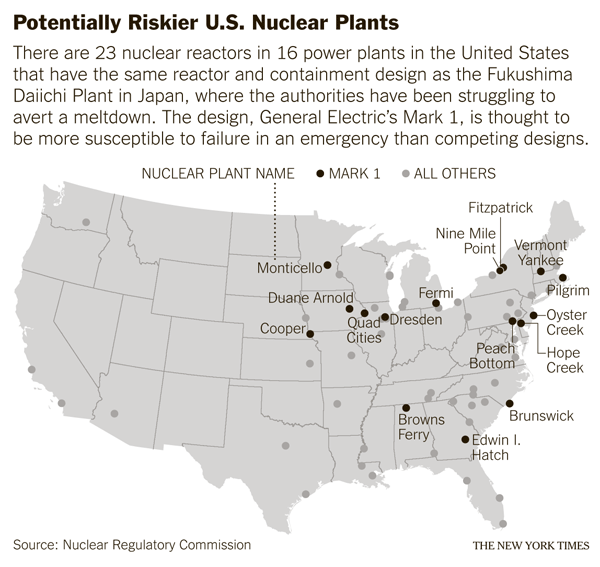In Sustainability by Design, John Ehrenfeld defines sustainable design as “That which allows for and even stimulates flourishing forever. ” Nuclear plants are, according to Ehrenfeld’s definition, Unsustainable by design!”
Washington, 1972: “If the cooling systems fails at a ‘Mark 1’ nuclear reactor, the primary containment vessel surrounding the reactor will probably burst as the fuel rods inside overheat. Dangerous radiation will spew into the environment.” – Stephen Hanauer, U.S. Atomic Energy Commission, Safety.
via Design of G.E.’s Mark 1 Nuclear Reactors Shows Weaknesses – NYTimes.com.
The core in “Pressurized Water Reactors is sealed inside a thick steel-and-cement sarcophagus, similar to what is now being built around Chernobyl. This suggests what we must eventually do to remediate the area on which now stand the Japanese reactors at Fukushima Dai-ichi, Diani, and Onagawa – entomb the entire plants in artificial mountains of cement and steel.
However, the containment vessel and pressure suppression system used in Japan’s Fukushima Daiichi facility is physically less robust. It has been understood to be more susceptible to failure in an emergency than other, more expensive designs. Safety costs money.
In the United States, 23 reactors at 16 locations use the Mark 1 design, including Oyster Creek, Vermont Yankee, Browns Ferry, Alabama, Fermi, Illinois.
Fourth in a series on the economics, ecological economics, finance, logistics, and sytems dynamics of nucleaer power in the light of the ongoing catastrophe at Fukushima.
